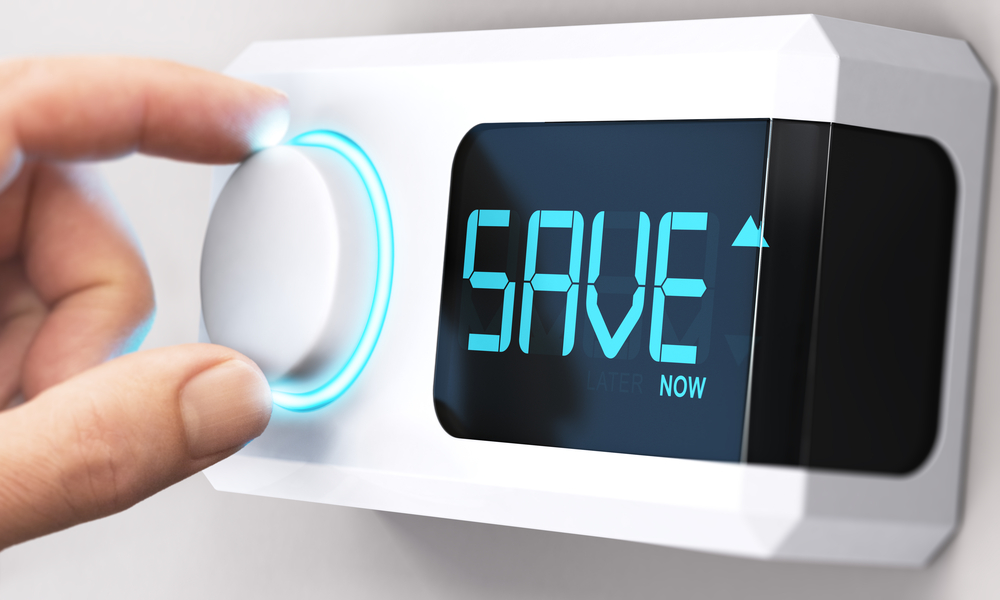If you’re investigating the ideal temperature for cooling your home during the warmer months, you’ve likely already bumped into the U.S. Department of Energy’s official recommendation to keep your home at a consistent temperature of 78 degrees Fahrenheit. That may seem a bit too tropical for your taste if you prefer a cool home. However, you may be wondering if enjoying a slightly cooler home when the weather turns warm means forgoing all potential for energy savings. First, it’s important to understand that the number on your thermostat is only part of the equation. Here’s a look at some other factors that contribute to just how efficient your home really is:
- The age of your HVAC system.
- The condition/maintenance status of your HVAC system.
- Your habits for setting your thermostat.
- Your home’s humidity level.
- Your home’s insulation.
That brings us back to the question of 78 degrees being the true “sweet spot” for keeping your home comfortable. You actually have a few different options for feeling as cool as a cucumber in your home if you don’t think the U.S. Department of Energy’s suggestion is going to do enough for you. Take a look at what you need to know about keeping your home at 78 degrees Fahrenheit.
Let Things Get a Little “Uncomfortable” When You’re Not Home
If you’re gone for work for a big chunk of the day, you have a great opportunity for boosting the efficiency inside your home! Allow your home to stay at 78 degrees Fahrenheit during the times when you’re not home during the summer months. While it’s okay to let things get even hotter, it’s also important to maintain a safe temperature inside your home. If you have pets that stay home during the day, it’s so important to keep your home cooled to a temperature that is safe for pets. Typically, that means maintaining a consistent temperature between 75 degrees Fahrenheit and 78 degrees Fahrenheit. You’ll also want to stay under 80 degrees Fahrenheit if you have plants in the house because many plant species will begin to wither at temperatures above that. Letting your home get too hot during the summer can also compromise your home’s structural integrity. Many of the compounds used in housing materials can actually begin to disintegrate in extreme temperatures. That means that trying to save money by going too hot can cost you more in the long run.
Will turning back your thermostat for part of each day actually help you to save money? According to the United States Department of Energy, you can save as much as 10 percent on heating and cooling costs simply by setting your thermostat back by 10 degrees for eight hours daily. If you’re in a mild climate, the savings might be even bigger. The general rule is that you’ll impact your energy bill by about 1 percent for every degree that you raise or lower your thermostat.
Invest in a Programmable Thermostat
You may be wondering if trying to turn your thermostat up and down based on when you’re home is actually going to cool your home more efficiently. The answer actually depends on the approach that you use to control the temperature. Manually adjusting your temperature at random times throughout the day can actually reduce the efficiency of your cooling system. It simply takes too much work for your system to try to catch up for this to be an effective strategy. However, there is a way to increase efficiency through adjusting your thermostat. The answer is to invest in a programmable thermostat.
You can find a thermostat that will learn your habits to provide optimal cooling based on those habits. Adjustable thermostats can gradually adjust settings to reach ideal temperatures during the times when you’re home, at work or sleeping. The benefit here is that your thermostat will actually begin adjusting incrementally in anticipation of your habits. That means that a gradual cooling will take place in the hours leading up to your return home from work each evening. You won’t have to wait for your home to cool down from an extreme temperature the way you would if you adjusted your thermostat manually upon your arrival. In addition to creating a much better environment inside your home, this method is also much gentler on your cooling system. According to Energy Star, installing a programmable thermostat in your home can save you between 10 percent and 30 percent on the heating and cooling portions of your energy bill.
Consider a System Upgrade
If it seems like you can practically feel the breeze caused by dollar bills floating out your window every time you crank up the setting on your thermostat, it may be time to upgrade your system. An outdated HVAC system could be costing you hundreds and hundreds of dollars per year in wasted energy costs. That can quickly add up to thousands of dollars in just a few years. If you upgrade to a newer Energy Star certified system with a good Seasonal Energy Efficiency Ratio (SEER) and Energy Efficiency Ratio (EER), you can expect to see your system’s efficiency go up by at least 15 percent overnight. In addition to saving you money, this upgrade will also improve quality of life by freeing your home from the uneven temperatures that you experience from room to room. Unfortunately, all of the starts and stops that you feel with an older system are actually causing the system to do more work with less output.
Avoid the “Arctic Blast” Technique
Many people falsely believe that they can “make up for lost time” with their thermostats by cranking the settings high for a quick “blast” after walking into a sweltering home. This is actually completely false! Setting your thermostat to an ultra-low temperature does not make your system work any faster. It will still reach each temperature on the dial at the same rate. However, you do run the risk of forgetting that you’ve set the temperature so low once you settle into your routine for the night. As a result, you’ll only realize that your home is unusually chilly when you check the thermostat again hours later. That means that you’ll needlessly raise your cooling costs without any actual benefit! The bottom line is that there’s simply no “cheating” when it comes to getting your home at the right temperature.
Extra Ways to Reduce Cooling Costs Without Watching the Thermostat
The state of your home can contribute to your HVAC’s efficiency. In fact, a complete plan should involve efficiency-minded maintenance for both your home and HVAC unit. Here’s a look at the best practices for lowering your energy bills painlessly:
- Use shades, blinds or other window coverings to prevent heat from seeping in during the day.
- Use ceiling fans for supplemental cooling in the places where you spend the most time in your home.
- Schedule routine maintenance for your cooling equipment.
- Keep televisions, lamps and other heat-generating appliances far away from your thermostat. Your thermostat will actually run longer than needed if it senses the heat coming off of these common appliances.
- Seal cracks, apply caulk and use weather stripping to prevent warm air from seeping into your home through doors, windows and cracks.
The bottom line is that 78 degrees Fahrenheit is a great “home base” for your thermostat. However, you don’t have to stay parked there to save money. Using a smart thermostat to adjust your home’s temperature based on your habits is a great way to reduce costs without feeling like you’re making any sacrifices.


Recent Comments